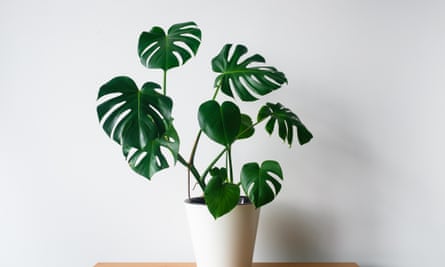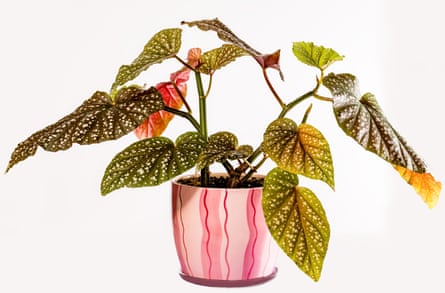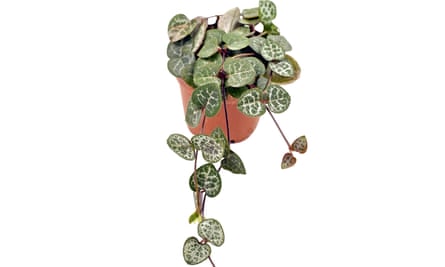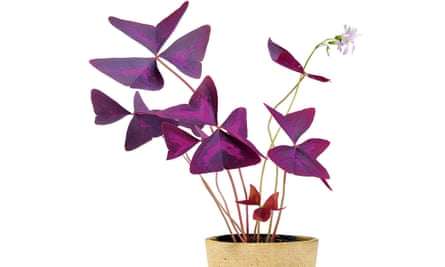
When was the last time you looked at your houseplants? Not a passing glance as you searched for your phone or gave them a quick water, but took the time to really consider them from the tips of their roots to the ends of their leaves.
Close observation is the best way to spot the symptoms of trouble ahead and make small tweaks in your care to help a plant that may otherwise be hurtling towards the compost heap. It will also make you feel better. There is mounting evidence that welcoming plants into our indoor spaces can help us access the many benefits of biophilia – our inbuilt need to connect with nature.
Don’t feel guilty if you’ve been ignoring your plants. Most species have lasted the course because of their ability to survive in our homes without keeling over within a few weeks, even if you forget to pay them any attention. But if you start to meet their needs better, they can survive for months, if not years. Here are five of the most popular plants, and what to look out for when caring for them.
Fiddle leaf fig (Ficus lyrata)
If you’ve been enticed into the not-very-exclusive club of fiddle leaf fig owners in the past few years, you may well find this plant doesn’t look as lush as when you bought it. These African trees need huge amounts of light, something often lacking in the average home. Placing them next to full-height windows is ideal, but make changes to light levels gradual to avoid leaf burn.
Clues to look for Fiddle figs hate erratic watering regimes and will show their displeasure by producing small stippled marks of red or brown on the leaves, especially new growth. Larger brown spots on the leaves that keep on spreading, followed by leaf drop, signal root rot.
What to do Try a self-watering pot to ensure even moisture. In winter, dry air will stress the plant out, so group it with other houseplants to create a more humid microclimate.
Swiss cheese plant (Monstera deliciosa)
One of the major errors made when growing monstera is a fear of pruning. Let me say loud and clear: you will not kill your plant by hacking back the stems. What it does need is support in the form of trellis, a moss pole or obelisk. Seedling vines find trees to climb by sensing and seeking out shade, not sun, and the muscly stems produce aerial roots to help anchor the plant to trees as it grows upwards through the canopy. The advice here is the opposite: don’t cut aerial roots off as they’ll just regrow, messily. Try to direct them to grow into the soil of the pot instead.
Clues to look for Weak growth is a cause for concern, but a lack of holes in the heart-shaped leaves just means your plant is young, or has been recently chopped back. Yellowing leaves often mean the roots are rotting because the potting mix is too wet.
What to do Spindly plants should be gradually moved towards a window to encourage stronger growth. Feed with a foliage houseplant fertiliser regularly when the plant is growing. If leaves turn yellow, examine the root ball and cut away slimy roots, repotting in a more free-draining potting mix by adding one-third perlite, expanded clay pebbles or fine orchid bark.
Polka dot Begonia (Begonia maculata)

My research found not a scrap of truth to the rumour that the foliage of this begonia inspired shoe designer Christian Louboutin to create his signature red sole, but this plant feels luxurious nonetheless. Sadly, the feeling often fades fast: this is a species that struggles within weeks of arriving in your home, becoming a leafless stick after a flurry of leaf drop. Overwatering is often blamed, but the problem is too little drainage and a lack of light.
Clues to look for Instagram filters fool us into thinking this plant’s leaves are dark green: in reality, newly emerging leaves start lime green and mature to a dark olive, so don’t worry if your plant differs from your social media expectations. Crispy tips to leaves are an early warning that your begonia is feeling sub par: once leaves begin falling one after the other, this is a full-blown plant emergency.
What to do Repot it as soon as possible into a houseplant potting mix cut with at least one-third drainage material. Place the nursery pot into a larger pot with pebbles at the bottom, then water from the top so the excess water goes into the stones. Do not let the root ball dry out, but keep the base of the pot above the water level.
after newsletter promotion
String of hearts (Ceropegia woodii)

String of hearts tends to trail from a high shelf or hanging pot, but to picture its growth habit in nature, think bathroom mat rather than chandelier. This southern African species nestles into cracks in rocky ground, its stems romping horizontally, not trailing. Stems grow from a tuber that looks a bit like a potato: this stores water and nutrients for times of drought.
Clues to look for Confusingly, withered stems and leaves can be a sign the roots are too dry or too wet. If your plant is a single, sad, sparsely leafed stem, more light is required. Stick your finger into the root ball before watering, and water only when dry. The silvery foliage will become plain green if light levels are low.
What to do The stems grow mini tubers which, when a suitable pocket of soil appears, can take root and extend the territory. The leaves are naturally sparse, but make the pot fuller by snipping off these aerial tubers and pressing them into the potting mix of the main pot. If leaves wither, remove the pot to check the rootball for moisture.
False shamrock (Oxalis triangularis)

If your oxalis starts to look miserably spindly come autumn, there’s an easy solution – pluck out all the leaves and start again. Oxalis grows from scaly rhizomes that sit underground, and a plant can be left to dry out for weeks at a time if it looks miserable. Then start watering again, and the foliage will resprout.
Clues to look for Leaves becoming stippled with pale patches is a sign of a spider mite infestation. The foliage folds up naturally at night, but will also close on hot summer days: a sign to move it away from the sun.
What to do Save time on watering by placing in a self-watering pot so you need only to top up the reservoir occasionally. If you favour the foliage over the pale pink flowers, cut these away as soon as they appear. Give your plants a holiday outside in the summer if you can: they make a beautiful addition to container displays and window boxes.
Jane Perrone’s book Legends of the Leaf is out on 27 April



